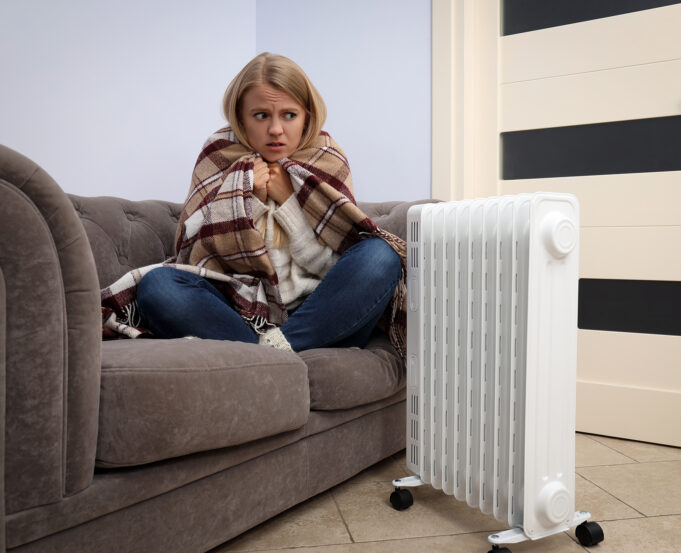While the winter months bring us festive holidays, a fresh start in the new year, and an excuse to invest in cozy sweaters and hot cocoa, it can also bring us burst pipes, ruined landscaping, and safety risks. To help ensure that you are prepared for the coldest season of the year, we’ve compiled several tips and tricks that will help you, your loved ones, and your home stay protected all season long.
Prepare Ahead of Time
Autumn isn’t just good for crisp weather, color-changing leaves, and an abundance of pumpkin spice – it’s also the best time of year to start preparing your home for winter. By planning ahead and addressing any needed repairs prior to start of winter, you can guarantee that you’ll have enough time for any potential delays or surprises.
Inspect your chimney and fireplace. Nothing beats a warm, cozy fire once the temperatures get cooler. But, to ensure that you can snuggle by the fire safely, it’s important to ensure that your fireplace and chimney are cleaned and fire safe.
It’s recommended to clean your chimney every 50 uses or once a year to avoid the buildup of soot and debris, which can be a fire hazard.
Clean out ashes regularly but be careful to allow them proper time to cool before disposing.
Only burn firewood and other materials that are safe for indoor burning. For a list of what materials are safe and which aren’t, we recommend checking out the guide here .
Utilize a fireplace guard to avoid hot embers escaping.
Ensure that your smoke alarm and carbon monoxide detectors are in working order, replacing batteries as needed.
Whether you use a fan in your living room or crack a window open, ensure that you have air circulating to help the heat disperse into your home. When turning on your ceiling fan, be sure to reverse the direction of the spin to help circulate warm air.
Ensure your home is properly insulated. When it comes to regulating temperatures in your home, insulation is key. Without proper insulation, you may have a difficult time keeping your home cool in the summer and warm in the winter, which could lead to high electric bills.
Do a thorough inspection. If you’ve noticed inconsistent temperatures, drafts, or high electric bills in your home, it’s probably best to conduct a home energy assessment . These assessments can be performed by yourself or by a professional.
Seal gaps around windows and doors . On a windy day, close all of your windows and doors and then feel around each to identify any areas where air is coming through. Then, use weather stripping or caulk to get a better seal.
Test your heating system. There are several ways to heat a home, from forced air to furnaces and boilers to even solar energy. One thing all of these systems have in common is regular maintenance.
Make a test run before temperatures fully drop to ensure that your heating system is functioning properly.
Restock any fuel that is required for your heating system to run.
Check vents to see if cleaning may be needed .
Keep furnace exhaust vents clean and maintained.
Replace any air filters.
Check your cooling system, too! Since air conditioners are responsible for keeping us cool in the summer, one might assume that once an air conditioner is shut off in the fall, there’s no further steps to be taken until temperatures rise again. However, to ensure the longevity of your air conditioner, we suggest following these steps to winterize your air conditioner.
Cut off power . To ensure that the air conditioner doesn’t accidentally turn on in the winter months, especially during frigid temperatures which could cause damage, ensure that power to the unit is completely shut off.
Visual inspection . Once your air conditioner has been shut off, check for any debris that may need to be removed, like leaves, trash, and other materials that may accumulate throughout the warmer months.
Keep it covered . To help keep moisture and debris out of the unit during dormant months, cover the unit using either plywood or a cover that is specially designed for covering your unit. When choosing how to cover your AC, be sure to keep in mind any rules your homeowners association may have when it comes to the exterior of your home.
Prepare the exterior of your home. To avoid costly damage and to ensure safety all winter long, be sure to remember other tasks that may be pending on the exterior of your home.
Swimming Pools : By the time winter rolls around, swimming pools should be winterized . This includes deep cleaning the pool, removing any lingering pool accessories, adjusting the water level and balancing the water as needed with chemicals, and covering it.
Patio Furniture : If possible, bring patio furniture inside or cover it to prevent damage from frost and snow.
Sprinkler Systems : To help prevent damage to your sprinkler system, it’s best to follow additional steps to winterize your system.
Drain Gas –Powered Appliances : To avoid damage to your lawn mower, pressure washer, or other gas-powered appliance, drain any remaining gasoline to help prevent erosion.
Don’t forget to winterize yourself, too. While you’re busy preparing your home for winter, it can be easy to forget that you also need to ensure that you and your loved ones are winter ready.
Ensure you have plenty of clothing to help keep you warm throughout the season. Depending on where you live, this could include heavy winter coats and boots that are good for keeping warm and dry in frigid temperatures, or simply having enough items to layer up for warmth in warmer climates.
Prepare ahead of time for the dry skin and chapped lips that winter can bring. Since heating systems are known for creating a low-humidity environment, utilizing a humidifier, especially in rooms where you sleep, can help you from drying out. Also, practice general good skincare by regularly applying lotion and lip balm and avoiding overly long showers, which can be drying.
We hope that these tips help you and your family have a safe, warm, and enjoyable holiday season. For more tips on all things HOA, be sure to check out our other articles !
The post A Winter Preparation Guide for Your Home first appeared on Spectrum Association Management.
Written by Spectrum AM | View the original article published by Spectrum Management











